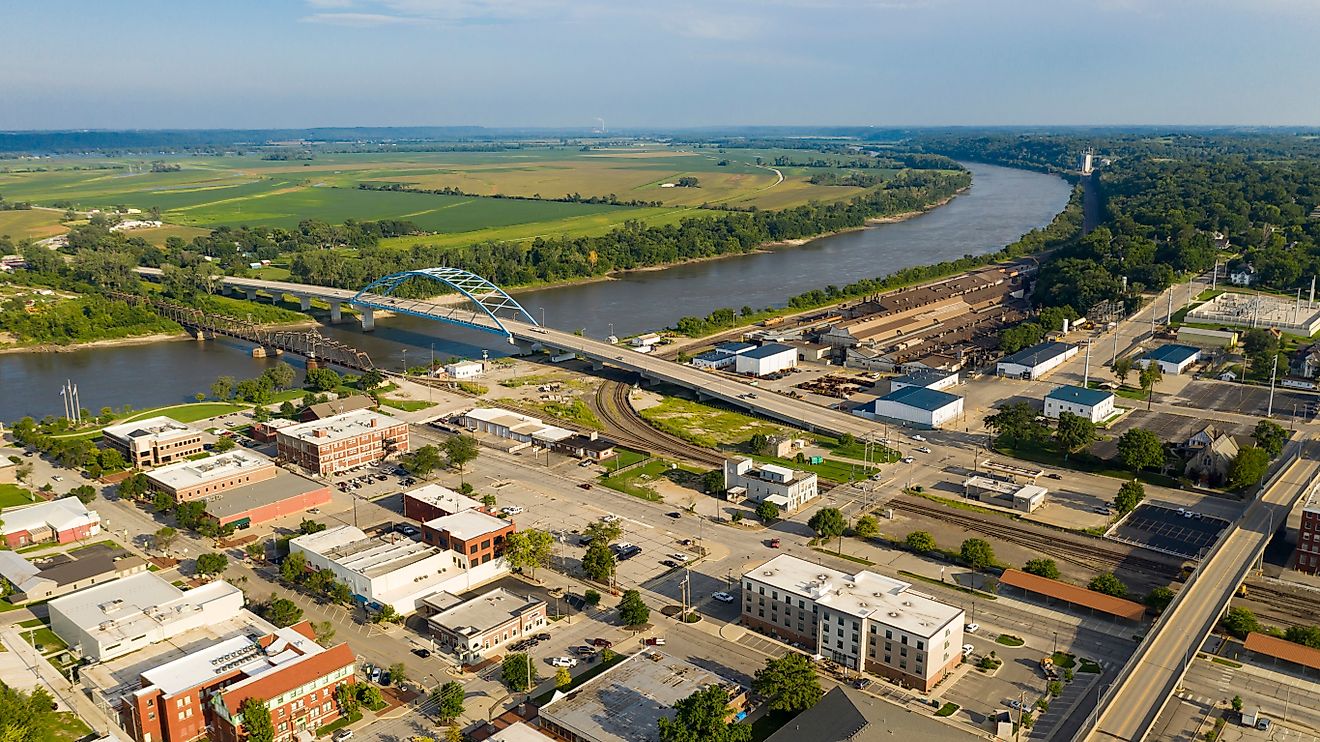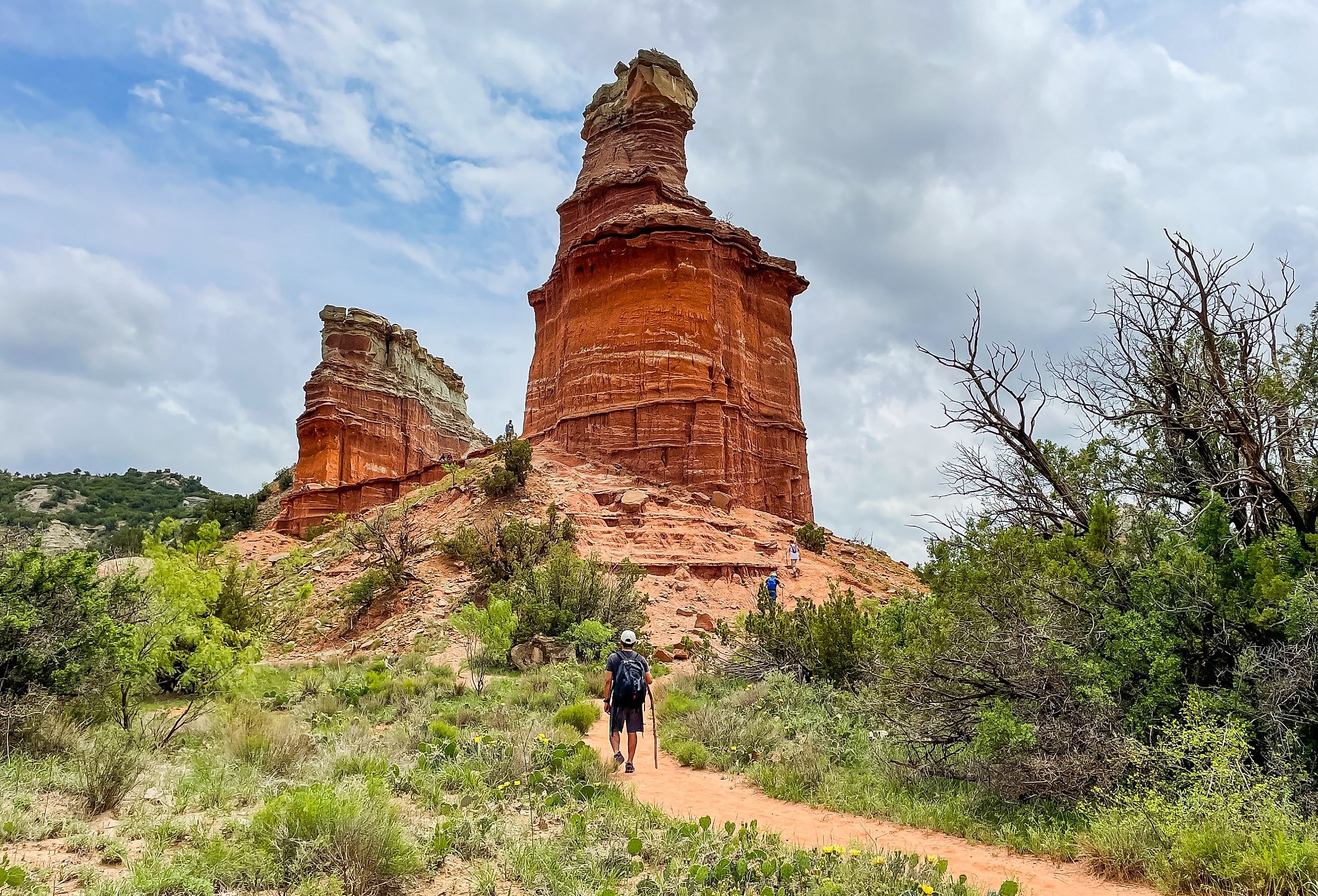
The Natural Wonders of Texas
Texas, colossally spanning 268,596 square miles in area, is the second largest state in the United States, comparable to the size of France. It is home to 10 distinct ecoregions, making it arguably one of the most diverse states in the country. Within this massive state lie several landmarks that leave its visitors especially in awe of Texas's beauty. Caddo Lake, Enchanted Rock, Palo Duro Canyon, Hamilton Pool, Devil's Sinkhole, Caverns of Sonora, Colorado Bend, and Big Bend are eight of Texas's most incredible wonders, waiting to be explored by those willing to venture out.
Caddo Lake

The biggest natural lake in Texas, Caddo Lake, boasts a fascinating, wetland ecosystem full of diverse wildlife and plants. The state park’s wetland is internationally protected and is home to one of the country’s largest flooded cypress forests, featuring gorgeous views of bald cypress trees cloaked by Spanish moss.
Within the 26,810-acre lake, there are over 70 species of fish and other wildlife such as the American alligator, alligator snapping turtle, and Spiney soft-shelled turtle. Park visitors can enjoy hiking along the 2.5 miles of park trails, boating, paddling, picnicking, camping, and geocaching. The park office also rents out canoes for those looking to explore the waters.
Enchanted Rock
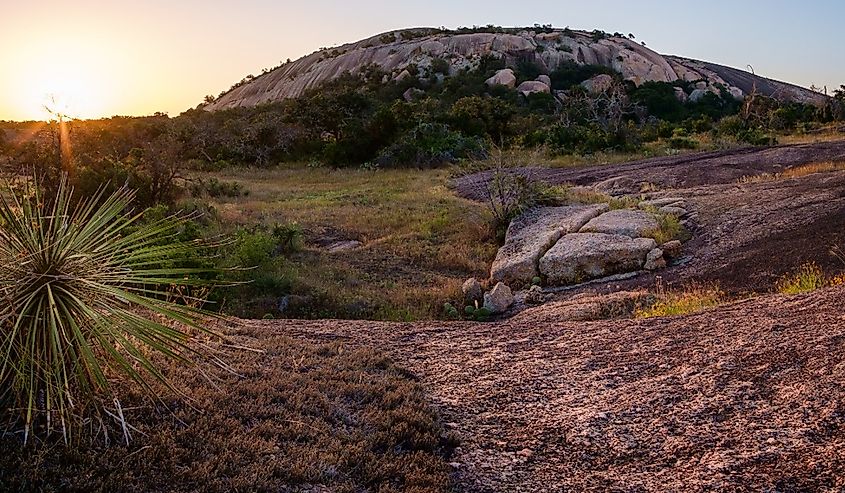
Enchanted Rock is a peculiar, 425-foot pink granite dome located approximately 17 miles north of Fredericksburg, Texas. The towering granite formation is visible for miles in the surrounding area and spans 640 acres, making it the largest pink granite formation in the United States. Wildlife in the Enchanted Rock State Park includes ringtails, armadillos, the Texas horned lizard, fairy shrimp in the rock’s vernal pools, wild turkeys, and roadrunners. There is also an incredible variety of native plants, totaling more than 500 species. The state park boasts around 11 miles of hiking trails as well as places to camp, rock climb, bird, and picnic.
Palo Duro Canyon
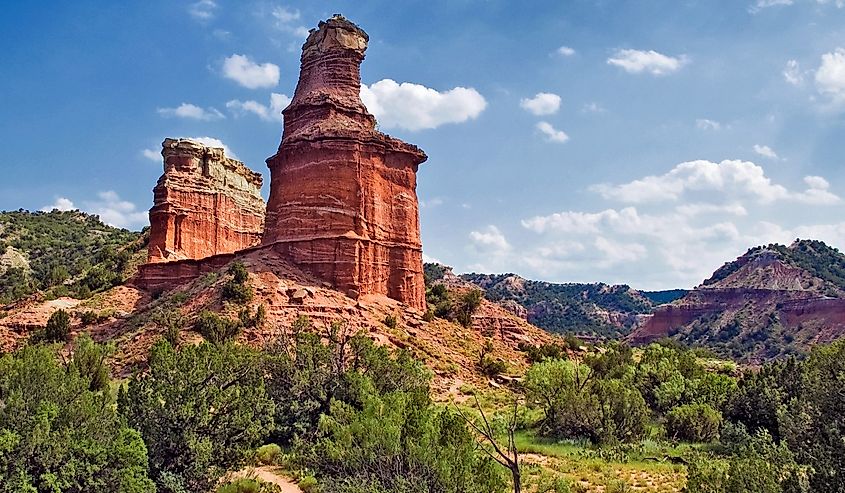
Known as the “Grand Canyon of Texas,” Palo Duro is the second largest canyon in the United States. Spanning 120 miles in length, it averages six miles in width and 800 feet in depth. In some areas, the canyon expands to 20 miles wide and plunges to depths of 1,000 feet.
Its pronounced geological features include steep mesa walls and rocks striped with multicolored layers. Hiking trails guide visitors around rock formations such as caves and hoodoos, one of the most iconic being Lighthouse Rock, featured on a popular six-mile trail. The park also offers camping, mountain biking, horseback riding, and birdwatching as popular activities.
Hamilton Pool
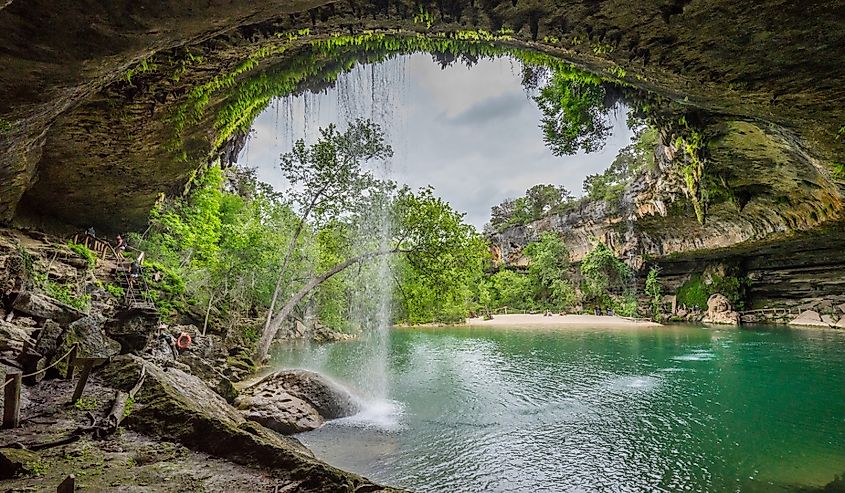
One of Texas’s finest natural oases, Hamilton Pool is a spring sourced from an underground river and carved into limestone bedrock. Rich in freshwater, the spring supports a lush and diverse array of trees and vegetation in the surrounding area. A large overhang forms a sheer, rocky cavern on the far side of the pool, where waterfalls often cascade over the edge.
Native bird species, such as the Golden-cheeked Warbler, can be found at Hamilton Pool, along with various rare plant species like the red bay, chatterbox orchid, and canyon mock-orange. The reserve is open daily for hiking, sightseeing, and swimming when conditions permit.
Devil’s Sinkhole
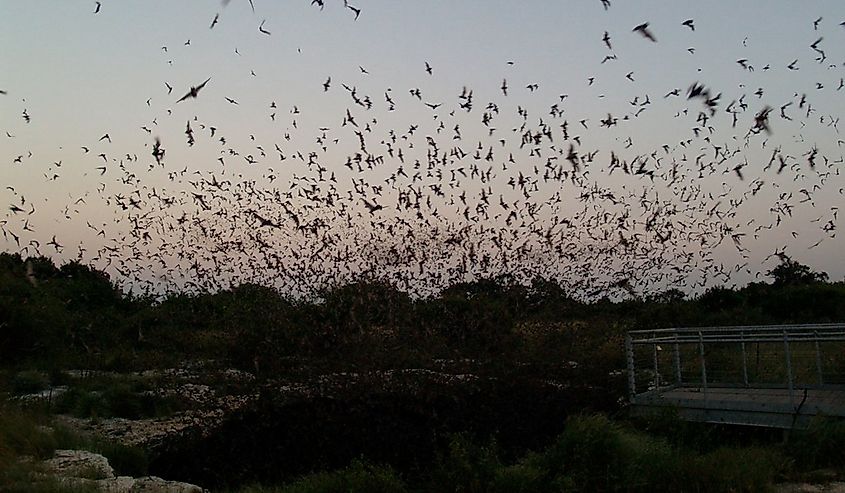
Devil’s Sinkhole attracts countless visitors each year, eager to witness the emergence of around 3 million Mexican free-tailed bats every sunset during warm summer nights. This vertical habitat, with a 50-foot wide shaft plunging 140 feet into a cavern measuring 320 by 350 feet, makes an ideal residence for the bats. They typically remain in the cavern from late spring through early fall, before migrating to Mexico for the winter in search of a warmer climate.
Devil's Sinkhole State Natural Area offers evening bat tours during the summer season, allowing visitors to experience this spectacular flight.
Caverns of Sonora
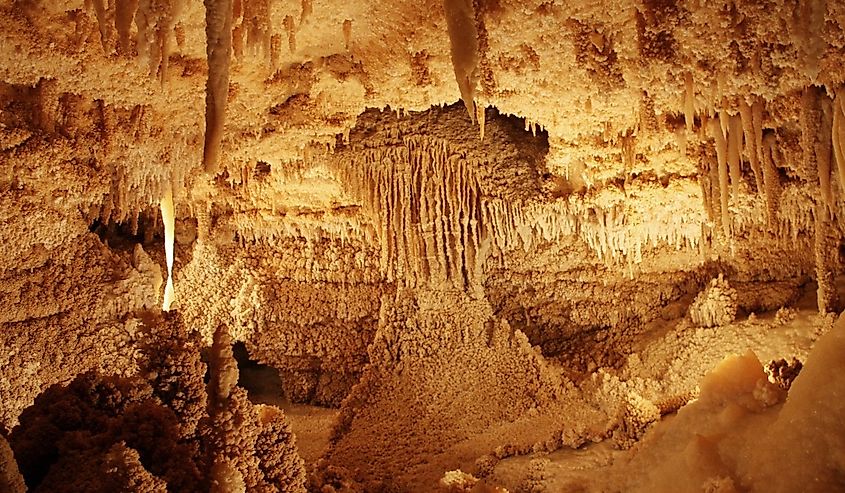
The Caverns of Sonora, a National Natural Landmark, features a 100-million-year-old cave renowned for its unique calcite crystal formations. These formations, primarily helictites, were created by sulfuric gases rising through the cave’s limestone faults, resulting in complex shapes and structures.
The cave's most famous feature, the Butterfly, was known worldwide for being the only formation of its kind until part of its right-wing was vandalized in 2006. Tours take visitors 155 feet deep into the cave, guiding them through nearly two miles of passages adorned with intricate crystal formations.
Colorado Bend State Park
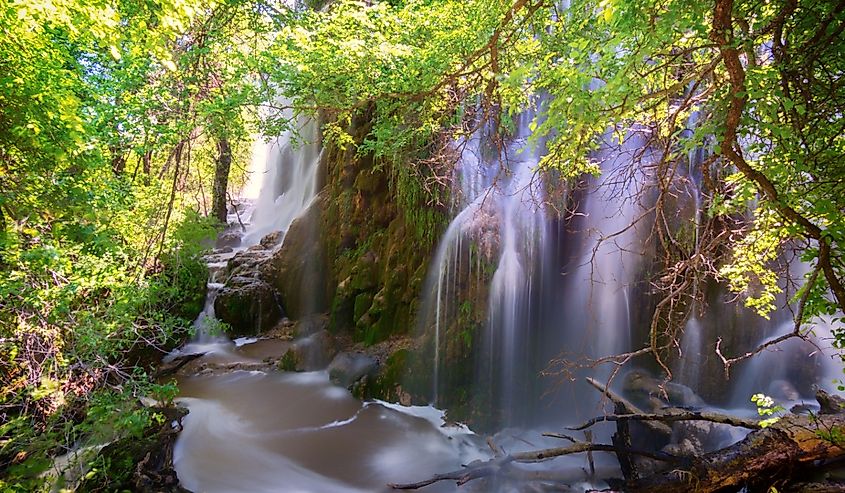
Chock full of springs, caves, and sinkholes, Colorado Bend State Park is breathtaking from start to finish. Spicewoods Springs Trail, for example, features numerous creek crossings and spring-fed swimming pools for visitors to appreciate throughout the hike. Gorman Falls is one of the park’s highlights, cascading at around 70 feet and surrounded by vibrant green ferns and mosses. The park is rich in flora and fauna, and over 150 species of birds can be found in the park, including the golden-cheeked warbler. Park visitors can enjoy hiking, fishing, and paddling, or sign up for a cave tour to see the park’s underground side.
Big Bend National Park
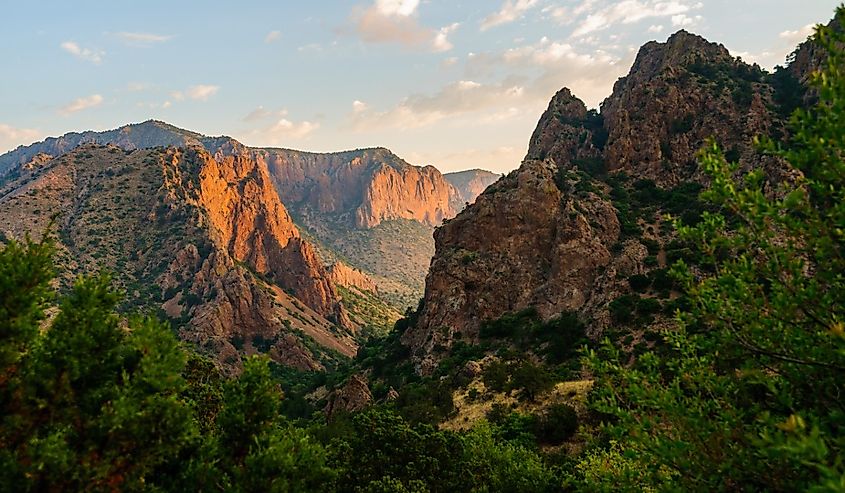
Big Bend, one of Texas's two national parks, boasts stunning landscapes from the Chihuahuan Desert. The Chisos Mountains are entirely contained within the park, and scenic, deep canyons such as Santa Elena, Boquillas, and Mariscal provide visitors with plenty to explore. Big Bend is also home to remarkable biodiversity, including 450 species of birds, 56 species of reptiles, 75 species of mammals, 40 species of fish, and 11 species of amphibians. With over 150 miles of trails, visitors should plan to spend at least three days in the park to fully experience its wonders.
Texas's vast landscapes and incredible natural diversity offer some of the most amazing natural wonders in the United States. From the swampy, alligator-inhabited waters of Caddo Lake, to the colorful depths of Palo Duro Canyon, each landmark represents a fragment of the geological wonders and ecological richness that the Lone Star State has in store for its intrepid explorers.

